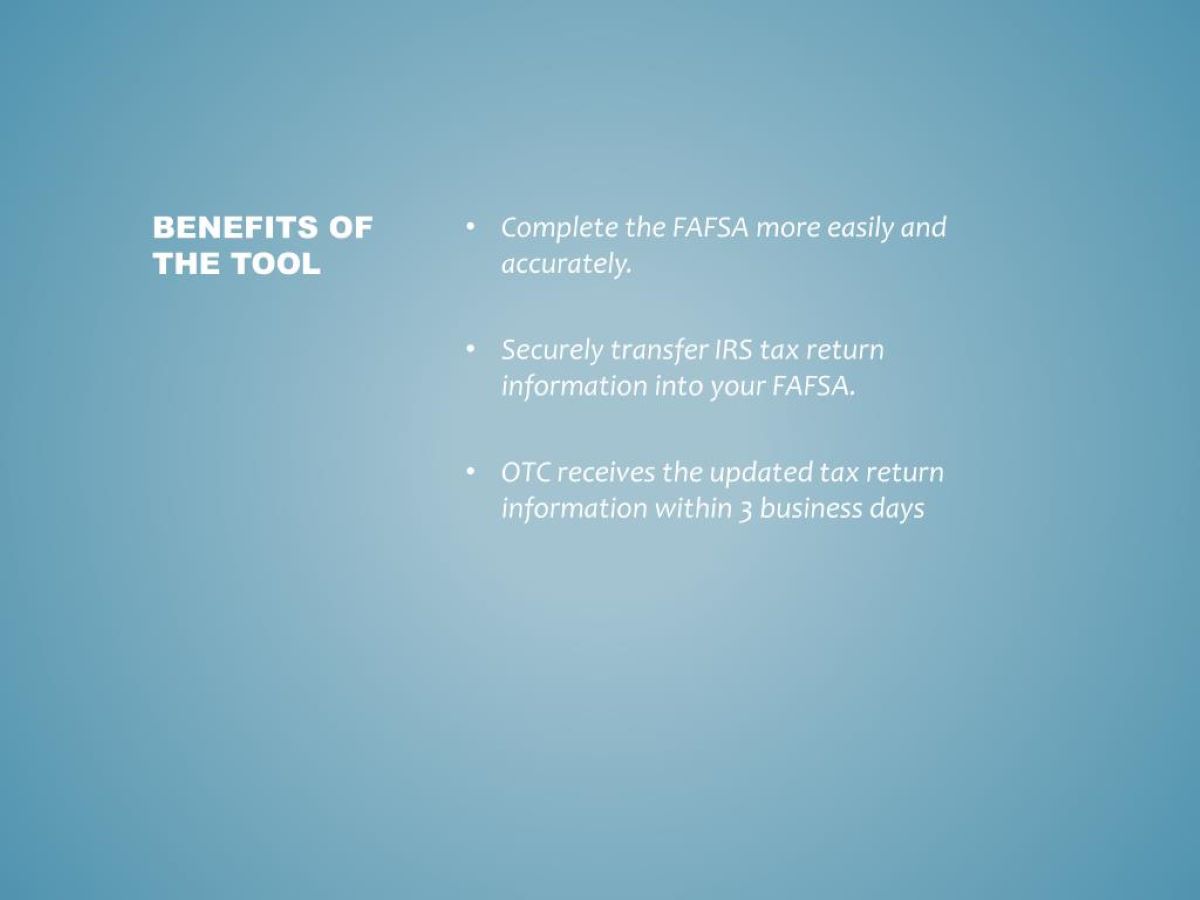

Finance
What Is Bridgeline Funding
Modified: February 21, 2024
Learn about Bridgeline Funding and how it can help you with your finance needs. Find out more about this innovative financial solution today.
(Many of the links in this article redirect to a specific reviewed product. Your purchase of these products through affiliate links helps to generate commission for LiveWell, at no extra cost. Learn more)
Table of Contents
- Introduction
- Definition of Bridgeline Funding
- How Bridgeline Funding Works
- Pros and Cons of Bridgeline Funding
- Typical Uses of Bridgeline Funding
- Eligibility Criteria for Bridgeline Funding
- Application Process for Bridgeline Funding
- Costs and Fees Associated with Bridgeline Funding
- Risks and Considerations of Bridgeline Funding
- Alternatives to Bridgeline Funding
- Conclusion
Introduction
Welcome to the world of Bridgeline Funding! In this article, we will explore the ins and outs of this unique financing option and uncover how it can help individuals and businesses bridge their financial gaps. Whether you’re a small business owner in need of immediate cash flow or an individual looking for short-term funding, Bridgeline Funding could be the solution you’ve been searching for.
But what exactly is Bridgeline Funding? And how does it work? Let’s dive in and find out.
Bridgeline Funding, also commonly known as bridge financing, is a type of short-term funding that provides individuals and businesses with the necessary cash flow to cover immediate financial needs. It serves as a temporary financial solution, bridging the gap between the time when funds are required and when more permanent financing can be secured.
Whether you’re facing unexpected expenses, waiting for a pending loan or grant approval, or simply need quick access to capital, Bridgeline Funding can provide the financial flexibility you need to keep your operations running smoothly.
Unlike traditional lenders that have lengthy application processes and strict eligibility criteria, Bridgeline Funding offers a faster and more accessible alternative. It can be particularly beneficial for individuals or businesses that may not qualify for traditional loans or may not have the luxury of waiting for approval.
One of the key advantages of Bridgeline Funding is its speed. The application and approval process are typically much quicker compared to traditional financing options. This allows borrowers to access funds within a short timeframe, providing them with the immediate liquidity they require to address pressing financial needs.
Furthermore, Bridgeline Funding is also known for its versatility. It can be customized to suit the specific financial needs and circumstances of each borrower. Whether you need funding for real estate investments, business expansion, or personal emergencies, Bridgeline Funding can provide a tailored solution to fit your unique situation.
Now that we have a general understanding of Bridgeline Funding, let’s explore how it works in more detail, including the pros and cons, common uses, and eligibility criteria. So, hang tight as we delve deeper into the world of Bridgeline Funding and discover how it can benefit you!
Definition of Bridgeline Funding
Bridgeline Funding, also referred to as bridge financing, is a short-term financing option that provides individuals and businesses with quick access to capital to bridge their financial gaps. It serves as a temporary solution that offers immediate cash flow to cover expenses or investments while waiting for more permanent funding to become available.
The term “bridge” in Bridgeline Funding refers to the concept of bridging the financial gap between two points in time. It can be seen as a financial bridge that spans the period between the need for funds and the availability of long-term financing. This type of funding is typically used for time-sensitive projects or urgent financial needs.
Bridgeline Funding is often utilized when individuals or businesses find themselves in situations where traditional funding options may not be readily available. This could be due to various reasons, such as a lack of credit history, low credit scores, or the need for immediate funding that doesn’t align with the lengthy approval processes of traditional loans.
The key characteristic of Bridgeline Funding is its short-term nature. It is designed to be repaid within a relatively short period, usually ranging from a few weeks to a few years. The repayment term is often tied to the anticipated availability of long-term financing or the resolution of the financial situation that necessitated the bridge funding.
Bridgeline Funding is typically offered by alternative lenders or specialized financial institutions that specialize in providing short-term financing solutions. These lenders assess applications based on different criteria than traditional lenders, giving borrowers with unique financial circumstances or urgent funding needs a chance to secure the capital they require.
It is important to note that Bridgeline Funding is often associated with higher interest rates compared to traditional loans. This is due to the increased risk and shorter repayment period associated with this type of financing. Borrowers should carefully evaluate the cost of borrowing and ensure that the benefits outweigh the higher interest expenses.
Overall, Bridgeline Funding provides an essential financial lifeline for individuals and businesses that need immediate access to capital. It serves as a valuable tool to bridge short-term financial gaps and allows borrowers to seize time-sensitive opportunities or navigate through unforeseen financial challenges.
How Bridgeline Funding Works
Bridgeline Funding operates on the principle of providing quick access to short-term capital to bridge the financial gap between immediate funding needs and the availability of more permanent financing. Understanding how Bridgeline Funding works is crucial for individuals and businesses seeking this type of financing.
The process begins with identifying the financial gap that needs to be filled. This could range from unexpected expenses, pending loan or grant approvals, or time-sensitive investment opportunities. Once the need for funding is established, borrowers can start exploring Bridgeline Funding options.
When applying for Bridgeline Funding, borrowers will typically need to provide information about their financial circumstances, the purpose of the funding, and any collateral or assets that can be used to secure the loan. This information helps lenders assess the risk associated with the loan and determine the terms, including the amount of funding and repayment schedule.
Unlike traditional financing options that have lengthy approval processes, Bridgeline Funding offers a quicker turnaround time. The application process is streamlined, and lenders are focused on assessing the current financial situation rather than historical credit scores or lengthy documentation requirements.
Upon approval, borrowers receive the funds they need to address their immediate financial needs. This could be in the form of a lump sum payment or a line of credit that can be accessed as needed. The funds can then be used to cover expenses, make investments, or seize time-sensitive opportunities.
Repayment terms for Bridgeline Funding vary depending on the lender, the amount borrowed, and the borrower’s financial situation. Some lenders may require interest-only payments during the loan term, with the full principal amount due at the end of the term. Others may structure the loan with regular monthly payments that include both principal and interest.
It is important to note that Bridgeline Funding often comes with higher interest rates compared to traditional loans. This is due to the short-term nature of the financing and the increased risk associated with it. Borrowers should carefully consider the cost of borrowing and ensure that they have a clear plan in place to repay the loan within the agreed-upon timeframe.
Once the bridging period is over, borrowers can then seek more permanent financing options to pay off the Bridgeline Funding. This could involve refinancing the loan, securing long-term funding, or leveraging other assets to repay the loan.
In summary, Bridgeline Funding provides a convenient and accessible solution for short-term funding needs. The streamlined application process, quick approval, and flexible repayment terms make it an attractive option for individuals and businesses seeking immediate access to capital to bridge their financial gaps.
Pros and Cons of Bridgeline Funding
Like any financial product, Bridgeline Funding has its own set of pros and cons. Understanding these advantages and disadvantages will help individuals and businesses make an informed decision about whether this financing option is right for them.
Pros:
- Quick Access to Capital: One of the primary advantages of Bridgeline Funding is the ability to quickly access capital. Traditional loans can involve lengthy approval processes, but Bridgeline Funding offers a streamlined application process and quicker turnaround time, providing borrowers with much-needed funds in a timely manner.
- Flexibility: Bridgeline Funding offers flexibility in terms of the loan amount and repayment terms. Borrowers can secure the funding they need and customize the repayment schedule according to their financial situation and requirements.
- No Credit History Requirements: Unlike traditional lenders who heavily rely on credit history, Bridgeline Funding providers often prioritize the borrower’s current financial circumstances rather than their credit score. This can be advantageous for individuals or businesses with less-than-ideal credit histories.
- Opportunity Seizing: Bridgeline Funding allows borrowers to seize time-sensitive opportunities that may otherwise be missed due to delays in securing traditional financing. This can be especially beneficial for real estate investors, entrepreneurs, or businesses looking to make strategic moves quickly.
Cons:
- Higher Interest Rates: One of the main drawbacks of Bridgeline Funding is the higher interest rates associated with this type of financing. Due to the short-term nature of the loans and the increased risk for lenders, borrowers can expect to pay higher interest rates compared to traditional loans.
- Short Repayment Period: Bridgeline Funding typically comes with a shorter repayment period, ranging from a few weeks to a few years. This means borrowers need to have a clear plan in place to repay the loan within the agreed-upon timeframe or secure more permanent financing before the end of the bridge term.
- Additional Fees and Costs: Along with higher interest rates, borrowers should also consider any additional fees or costs associated with Bridgeline Funding. These may include origination fees, application fees, or prepayment penalties. It’s important to thoroughly review the terms and conditions of the loan to understand the full cost of borrowing.
- Collateral Requirements: Depending on the lender and the specific circumstances, borrowers may be required to provide collateral or assets to secure the Bridgeline Funding. This can add another layer of consideration and potential risk for borrowers, as failure to repay the loan could result in the loss of the collateral.
By weighing these pros and cons, borrowers can determine if Bridgeline Funding aligns with their financial goals and circumstances. It is essential to carefully evaluate the benefits and drawbacks before committing to this type of short-term financing.
Typical Uses of Bridgeline Funding
Bridgeline Funding offers individuals and businesses a flexible and accessible financing option to address various short-term financial needs. Let’s explore some typical uses of Bridgeline Funding that highlight the versatility and practicality of this financing solution.
Real Estate Investments:
One common use of Bridgeline Funding is in the realm of real estate. Investors who spot a lucrative investment opportunity but lack the necessary funds to act quickly can utilize bridging loans to secure the property. This allows them to bridge the financial gap between the purchase and the availability of long-term financing, such as mortgages or property development loans.
Business Expansion:
Businesses often turn to Bridgeline Funding to facilitate their expansion plans. Whether it’s opening a new location, purchasing equipment, or funding marketing initiatives, bridging loans can provide the necessary working capital during the growth phase. This allows businesses to seize growth opportunities without waiting for traditional financing options.
Bridge Financing for Construction Projects:
Construction projects frequently require bridging loans to manage cash flow efficiently. Builders and developers may experience delays in receiving progress payments from clients or face unexpected expenses. Bridgeline Funding can bridge the gap, ensuring that construction projects continue uninterrupted until long-term financing or client payments are received.
Emergency Expenses:
Life is full of unexpected emergencies, and not all of them can be covered by emergency savings. Bridgeline Funding can provide quick access to funds in times of personal emergencies, such as medical expenses, home repairs, or unexpected travel. This helps individuals bridge the financial gap until they can arrange more permanent funding or recover from the crisis.
Business Cash Flow Management:
Smaller businesses or startups may face cash flow challenges due to delayed payments from clients or seasonal fluctuations. Bridgeline Funding can help bridge the gap between receivables and payables, ensuring the smooth operation of the business by covering day-to-day expenses until outstanding payments are received.
Opportunistic Investments:
Opportunities sometimes arise that require swift action and immediate funding. Whether it’s buying inventory at a discounted price, acquiring a competitor, or expanding into new markets, Bridgeline Funding can provide the necessary capital to seize these time-sensitive opportunities, giving businesses a competitive edge in the market.
These are just a few examples of the typical uses of Bridgeline Funding. The versatility of this funding option allows individuals and businesses to bridge financial gaps in various scenarios, ultimately helping them achieve their goals and navigate through temporary financial challenges.
Eligibility Criteria for Bridgeline Funding
While Bridgeline Funding offers a more accessible alternative to traditional financing options, there are still certain eligibility criteria that borrowers need to meet in order to qualify for this type of funding. Let’s explore the typical eligibility requirements that lenders consider when evaluating applications for Bridgeline Funding.
Financial Situation:
Lenders assess the borrower’s current financial situation to determine their ability to repay the loan. This includes factors such as income, cash flow, and existing debt obligations. Lenders want to ensure that borrowers have a stable financial foundation to meet their repayment obligations during the bridging period.
Collateral or Assets:
Some Bridgeline Funding providers may require borrowers to provide collateral or assets to secure the loan. This can help reduce the lender’s risk and increase the chances of loan approval. The value and type of collateral will vary depending on the lender and the specific circumstances of the borrower.
Business Documentation (for business borrowers):
If the borrower is a business seeking Bridgeline Funding, lenders may require specific documentation to assess the financial health and viability of the business. This can include business plans, financial statements, tax returns, and proof of ownership. The lending institution wants to ensure that the business has a solid foundation and is capable of generating enough cash flow to repay the loan.
Exit Strategy:
Since Bridgeline Funding is a short-term financing option, lenders usually require borrowers to present a clear exit strategy. This outlines how the borrower plans to repay the loan when the bridging period ends. This can involve securing more permanent financing, selling an asset, or generating sufficient cash flow from a project or investment.
Credit History:
While Bridgeline Funding providers often prioritize the current financial situation over credit history, some lenders may still consider the borrower’s creditworthiness. This can involve reviewing credit scores, credit reports, and payment history. However, borrowers with less-than-perfect credit may still have options available to them, especially with alternative lenders who focus more on the current financial scenario.
It’s important to note that the eligibility criteria for Bridgeline Funding can vary depending on the lender and the specific circumstances of the borrower. It’s advisable to inquire with multiple lenders to explore different options and find the best fit for your financial needs.
Application Process for Bridgeline Funding
The application process for Bridgeline Funding is typically more streamlined and faster compared to traditional financing options. While the specific steps may vary depending on the lender, here is a general overview of what to expect when applying for Bridgeline Funding:
Step 1: Research and Comparison:
Begin by researching and comparing different Bridgeline Funding providers to find one that suits your needs. Consider factors such as interest rates, repayment terms, eligibility criteria, and customer reviews. This will help you narrow down your options and choose the most suitable lender.
Step 2: Application Submission:
Once you have selected a lender, you will need to complete an application. This can usually be done online or in person, depending on the lender’s preferences. The application will require you to provide personal or business information, including financial details, the purpose of the funding, and any collateral or assets you can offer as security.
Step 3: Financial Assessment:
After receiving your application, the lender will conduct a financial assessment to evaluate the viability of the loan. This assessment will involve reviewing your income, cash flow, existing debt obligations, credit history (if applicable), and collateral value (if required). The lender will use this information to determine your eligibility and assess the risk associated with the loan.
Step 4: Approval and Offer:
If your application is approved, the lender will provide you with an offer outlining the loan amount, repayment terms, interest rates, any fees, and other relevant details. Take the time to carefully review the offer and make sure you understand the terms and conditions before accepting.
Step 5: Documentation and Signing:
Once you have accepted the loan offer, you will be required to provide any additional documentation requested by the lender. This may include identification documents, proof of income, business plans (for business borrowers), or any other documents that support your application. After reviewing the documentation, you will sign the loan agreement.
Step 6: Funding:
Upon signing the loan agreement, you will receive the funds you have been approved for. The funds can be deposited directly into your bank account or provided in another agreed-upon manner. You can then use the funds to address your immediate financial needs.
The application process for Bridgeline Funding is typically faster compared to traditional loans, and decisions can often be made within days or even hours. However, it’s important to note that each lender may have their own specific requirements and variations in their application process.
Be sure to thoroughly read and understand the terms and conditions of the loan agreement before proceeding. If you have any questions or concerns, don’t hesitate to reach out to the lender for clarification. By being well-prepared and informed, you can navigate the application process for Bridgeline Funding with confidence.
Costs and Fees Associated with Bridgeline Funding
When considering Bridgeline Funding, it’s important to understand the costs and fees associated with this type of financing. While specific charges may vary depending on the lender and the terms of the loan, here are some common costs and fees you may come across:
Interest Rates:
One of the primary costs of Bridgeline Funding is the interest charged on the loan. The interest rates for bridging loans are often higher than those of traditional financing options due to the short-term nature and the increased risk associated with the loan. The interest rate may be fixed or variable, depending on the terms agreed upon with the lender.
Origination Fees:
Some lenders may charge an origination fee to cover the administrative costs of processing the loan. This fee is typically a percentage of the loan amount and is deducted from the funds you receive. Origination fees can vary among lenders, so it’s important to inquire about any upfront fees when evaluating your options.
Exit Fees:
Exit fees are charges that may be applied when you repay the bridging loan before the agreed-upon term has ended. These fees are imposed to compensate the lender for the early termination of the loan, as they may have anticipated earning interest over a longer period. It’s important to review the loan agreement for any potential exit fees and factor them into your repayment planning.
Valuation Fees:
In cases where collateral is required for the Bridgeline Funding, the lender may charge a valuation fee to assess the value of the asset being used as security. This fee covers the cost of hiring a professional appraiser to determine the worth of the collateral. The valuation fee can vary depending on the complexity of the valuation process and the type of collateral being evaluated.
Legal Fees:
Legal fees may be incurred if you choose to consult with a solicitor or conveyancer to review the loan agreement and provide legal advice. While legal representation is not always necessary, some borrowers may choose to seek professional guidance to ensure they fully understand the terms and conditions of the loan before signing.
Other Fees:
In addition to the aforementioned costs, there may be other fees associated with Bridgeline Funding, depending on the lender. These can include application fees, drawdown fees (if the loan is disbursed in multiple installments), and arrangement fees. It’s crucial to carefully review the loan agreement for a comprehensive list of all fees and their respective amounts.
It’s important to factor in these costs and fees when evaluating the overall cost of borrowing. Understanding the financial implications will help you make an informed decision and ensure that the benefits of bridging finance outweigh the associated expenses. It is advised to obtain a detailed breakdown of all costs and fees from the lender before finalizing the loan agreement.
Risks and Considerations of Bridgeline Funding
While Bridgeline Funding can provide individuals and businesses with needed access to short-term capital, it’s important to carefully consider the risks and potential drawbacks associated with this type of financing. Here are some key risks and considerations to keep in mind:
Higher Interest Rates:
Bridgeline Funding often comes with higher interest rates compared to traditional loans. This is due to the short-term nature of the loan and the increased risk for the lender. Borrowers should carefully assess the cost of borrowing and determine if the benefits of the loan outweigh the higher interest expenses.
Short Repayment Period:
Bridgeline Funding usually has a shorter repayment period compared to traditional loans. Borrowers must have a clear plan to repay the loan within the agreed-upon timeframe. Failure to do so may result in additional fees and penalties or have a negative impact on credit history.
Financial Risk:
Any form of borrowing carries financial risk, and Bridgeline Funding is no exception. Borrowers should carefully consider their ability to repay the loan and assess the potential impact on their overall financial situation. It’s crucial to have a solid repayment plan in place to mitigate the risk and ensure long-term financial stability.
Collateral Requirements:
Some lenders may require borrowers to provide collateral or assets as security for the loan. This means that if the loan is not repaid as agreed, the lender has the right to seize the collateral. Borrowers should thoroughly evaluate the risks associated with providing collateral, as failure to repay the loan could result in the loss of valuable assets.
Exit Strategy:
One important consideration with Bridgeline Funding is having a well-defined exit strategy. Borrowers need to have a plan in place to repay the loan or secure more permanent financing once the bridging period ends. Failure to do so may result in additional costs or difficulties in transitioning to long-term financing.
Market Fluctuations:
Borrowers undertaking Bridgeline Funding for real estate or investment purposes should be mindful of market fluctuations. Changes in the property market or investment climate can impact the value of assets and the ability to secure long-term financing. It’s important to research and assess the market conditions to minimize potential risks.
It is crucial for borrowers to weigh these risks and considerations before pursuing Bridgeline Funding. Conducting a thorough evaluation of the financial situation, repayment capabilities, and long-term goals will help determine if this financing option aligns with their specific needs and risk tolerance.
Alternatives to Bridgeline Funding
While Bridgeline Funding can be a valuable short-term financing option, it’s important to explore alternative options to ensure you choose the best solution for your financial needs. Here are a few alternatives to consider:
Traditional Bank Loans:
Traditional bank loans offer longer repayment periods and lower interest rates compared to Bridgeline Funding. If you have a strong credit history and sufficient time to go through the application and approval process, a traditional bank loan could be a more cost-effective option.
Business Line of Credit:
For businesses in need of ongoing access to funds, a business line of credit can be a versatile alternative. This financing option provides a predetermined credit limit that can be used as needed, offering more flexibility and convenience than a one-time bridging loan.
Personal Loans:
If you require funds for personal expenses, such as home improvements or debt consolidation, a personal loan may be a suitable option. Personal loans typically have longer repayment terms and lower interest rates than Bridgeline Funding, making them a more affordable choice for individuals.
Credit Cards:
For smaller or short-term expenses, credit cards can provide a convenient and accessible funding solution. If you have a credit card with a sufficient credit limit, it can be used to cover immediate financial needs. However, it’s important to manage credit card debt responsibly and be aware of potentially high interest rates.
Peer-to-Peer Lending:
Peer-to-peer lending platforms connect borrowers directly with individual investors, bypassing traditional financial institutions. These platforms offer flexible loan terms and competitive interest rates, making them worth exploring as an alternative to Bridgeline Funding.
Bootstrapping or Self-Funding:
Another alternative is to fund the financing needs from your own resources. This can include utilizing personal savings, reinvesting profits from a business, or seeking assistance from family and friends. While self-funding may require more time and effort, it allows you to avoid interest payments and maintain complete control over your financial situation.
Each alternative financing option has its own advantages and considerations. It’s crucial to carefully evaluate your specific requirements, repayment capabilities, and the overall cost of borrowing before making a decision. Explore multiple options, seek professional advice if needed, and choose the financing solution that best aligns with your financial goals and circumstances.
Conclusion
Bridgeline Funding offers individuals and businesses a valuable solution for bridging short-term financial gaps and accessing immediate capital. It provides a flexible and accessible financing option that can help borrowers address a variety of financial needs. However, it’s important to carefully evaluate the pros and cons, eligibility criteria, costs, and risks associated with Bridgeline Funding before making a decision.
With its quick access to funds, flexible repayment terms, and customized solutions, Bridgeline Funding can be a lifeline for businesses looking to seize time-sensitive opportunities, navigate cash flow challenges, or fund expansion plans. Similarly, individuals can benefit from bridging loans to address personal emergencies, take advantage of real estate investments, or manage unexpected expenses.
However, borrowers need to consider the potential risks, such as higher interest rates, shorter repayment periods, collateral requirements, and the need for a clear exit strategy. It’s crucial to assess one’s ability to comfortably repay the loan and evaluate alternative financing options, such as traditional bank loans, personal loans, or business lines of credit, to ensure the best fit for their specific circumstances.
By carefully considering the benefits and drawbacks, conducting thorough research, and working with reputable lenders, borrowers can make well-informed decisions about Bridgeline Funding. It is advisable to seek professional advice if needed and carefully review all loan agreements and terms before proceeding.
In conclusion, Bridgeline Funding can be an effective and efficient solution to bridge financial gaps and provide immediate access to capital. By assessing your financial needs, exploring alternative financing options, and weighing the associated costs and risks, you can make a sound decision that aligns with your short-term financial goals and sets the stage for long-term financial success.














